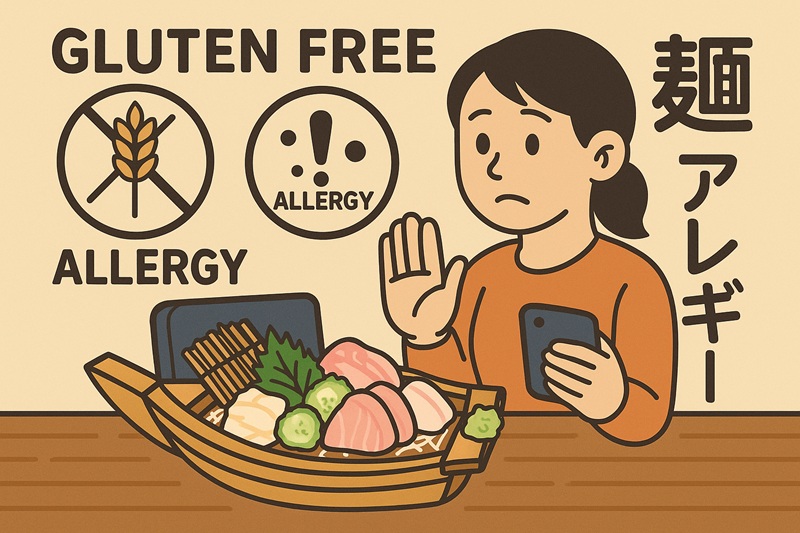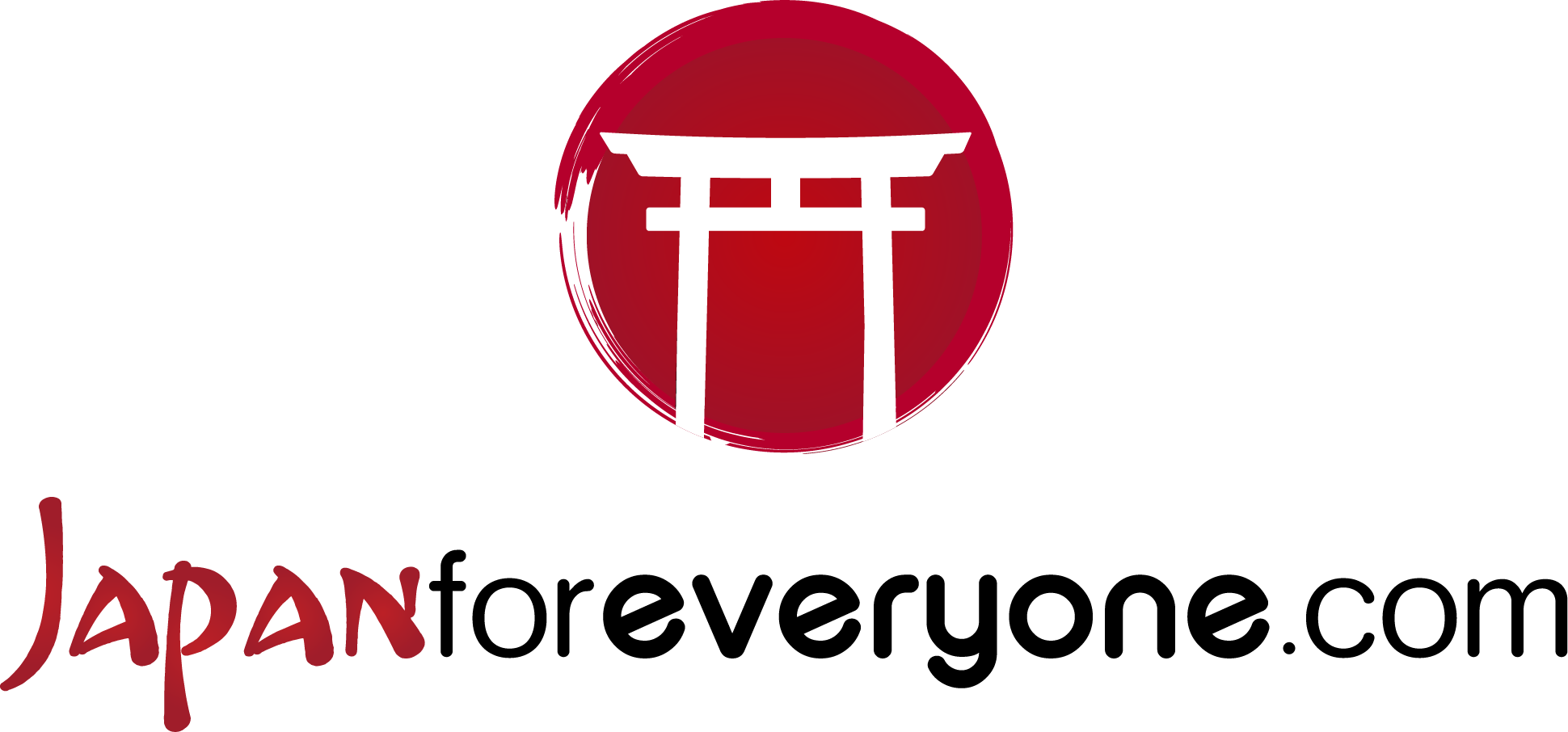Celiac Disease and Allergies in Japan
Celiac disease is not very common in Japan, and for this reason, it is not as well-known as it is in Italy, where there are specialized stores and most restaurants are prepared to accommodate gluten-free diets.
This is why it’s important to thoroughly research Japanese dish ingredients (you’ll find a table below). Simply telling a waiter that you have celiac disease may not be enough, as they may not understand the issues gluten can cause for someone with the condition.
What foods can someone with celiac disease eat? It’s hard to say for sure, because some dishes that seem safe might not be. For example, certain sauces like tare (a soy sauce mixed with flour) or some types of soba, which are gluten-free if made traditionally, can also be made with wheat flour.
Generally safe dishes include sashimi (without sauce), some kinds of sushi (make sure the rice vinegar isn’t mixed with malt), and matcha tea.
Avoid dishes like tempura, unagi, ramen, udon, okonomiyaki, and takoyaki.
My advice is to bring some food from home to be 100% safe, and to make a list of gluten-free-friendly restaurants by searching on Google.

Koichi Oda, CC BY-SA 2.0, via Wikimedia Commons
Safe Ingredients (可)
• Rice 米 kome
• Corn とうもろこし tōmorokoshi
• Cornstarch コーンスターチ kōnstāchi
• Soybeans 大豆 daizu
• Buckwheat flour そば粉 sobako
• Sesame ごま goma
• Millet キビ・アワ kibi/awa
• Tapioca タピオカ tapioka
• Fresh vegetables 生野菜 namayasai
• Beans 豆 mame
• Fruit フルーツ furūtsu
• Potatoes いも imo
• Potato starch ポテトスターチ・粉 potetostāchi/potetoko
• Meat 肉 niku
• Fish and shellfish 魚介類 gyokairui
• Eggs 卵 tamago
• Milk 牛乳 gyūnyū (and dairy products like yogurt ヨーグルト yōgurto, cheese チーズ chīzu)
• Nuts ナッツ nattsu
• Certified gluten-free products グルテンフリーラベルの食品 gurutenfrīraberu no shokuhin
Ingredients to Avoid (不可)
• Wheat flour 小麦 komugi
• Barley 大麦 ōmugi
• Barley malt 大麦モルト ōmugimorto
• Oats オート麦 ōtomugi
• Spelt 小麦の1種 komugi no isshu
• Kamut 小麦の1種 komugi no isshu
• Malted milk 麦芽入りミルク bakugairimiruku
• Malt flavor 麦芽香料 bakugakōryō
• Malt syrup 水飴 mizuame
• Rye ライ麦 raimugi
• Seitan 麩 fu
• Triticale ライ小麦 raikomugi
• Tempura (if made with wheat flour) 天ぷら tenpura
• Baked goods like bread, breadcrumbs, cakes etc.(パン pan、パン粉 panko、ケーキ kēki)
• Cookies, muffins (クッキー kukkī、マフィン mafin)
• Beer ビール bīru
• Pasta パスタ pasta
• Noodles (soba, udon, etc.) 麺類 menrui
• Gyoza 餃子 gyōza
What to Say at a Restaurant
When eating out, the hardest part is explaining your condition. Here is a link to a downloadable PDF with useful phrases in Japanese.
Allergies
If you have any allergies, the first thing to do before leaving is research Japanese foods (as you should do for any country). This helps you know in advance what to avoid.
To be safe, always ask in stores or restaurants about the ingredients of each product or dish. To help you, you can download and print cards that indicate your allergy. You can find them at the following link:
